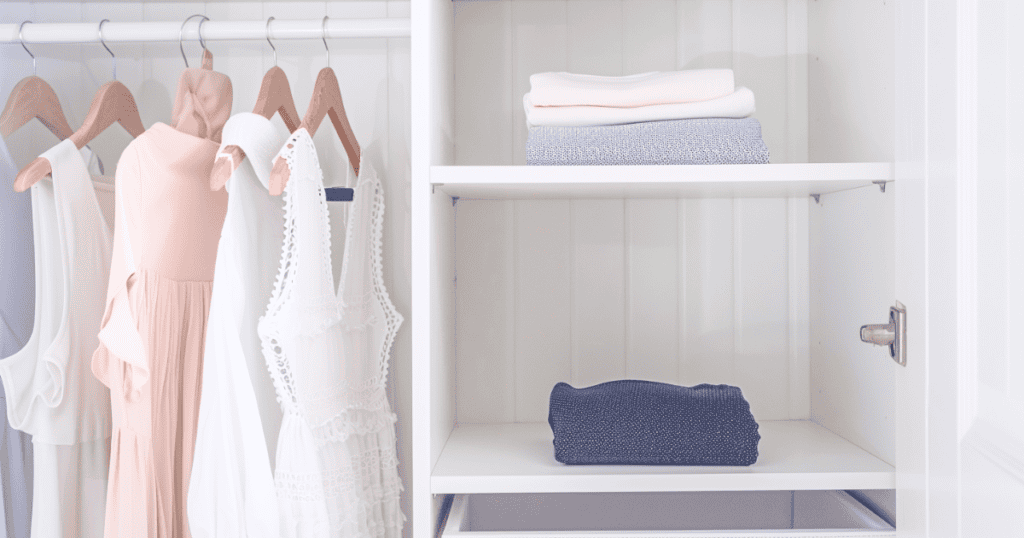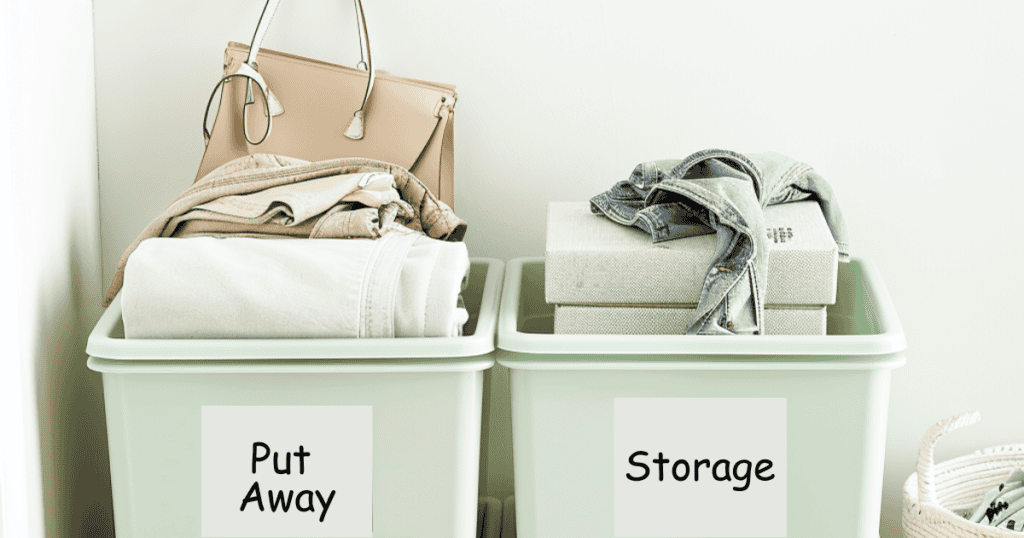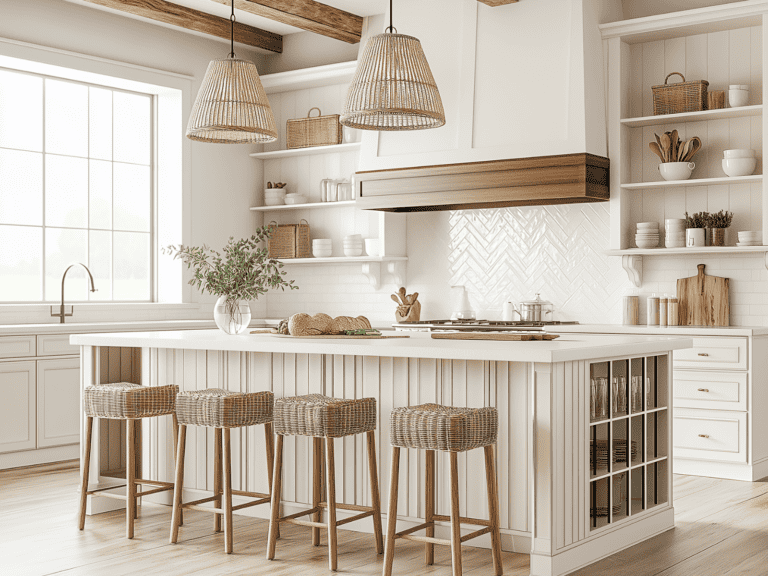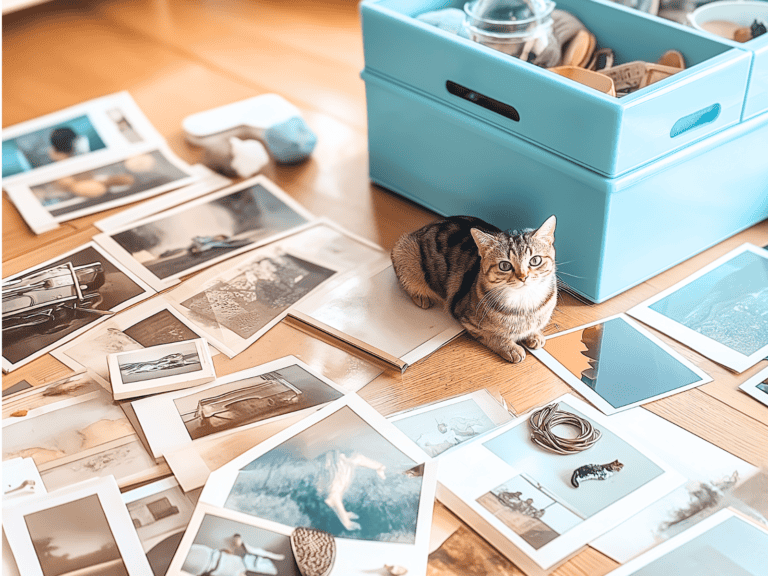12 Things Not To Do When Decluttering
Feeling overwhelmed by a mountain of stuff? You’re not alone. Clutter can sneak up on even the most organized among us. If you’ve tried decluttering before only to end up right back where you started, don’t worry—that’s perfectly okay. I’m here to share what things NOT to do when decluttering so you can finally tackle it successfully this time.
Don’t worry, friend! We’ve all been there. Decluttering can be tough, but it doesn’t have to be a never-ending battle. In this guide, we’ll share the most common decluttering blunders and give you the tools to sidestep them.
So, take a deep breath, roll up your sleeves, and get ready to reclaim your space! By the end of this article, you’ll know how to declutter effectively without falling into the usual traps.
A Personal Decluttering Story
I recently donated a set of Fiestaware dishes that I’d cherished for over 20 years. My mom had given them to me, and they were beautiful. But honestly, I rarely used them. A young couple just starting out will get far more use out of those dishes than they were getting in the back of my cupboard.
Letting go was a little bittersweet, but it also felt incredibly freeing. And that’s what decluttering is all about – creating space for what truly matters.
Let’s Get Started!
Ready to learn from my mistakes (and the mistakes of many others)? Let’s examine the 12 things you should avoid when decluttering.
1. Don’t Start Without a Plan

Imagine setting off on a cross-country road trip with no map, no GPS, and no idea where you’re headed. Sounds chaotic, right? Decluttering without a plan is a lot like that. It’s easy to get overwhelmed, lose focus, and end up right back where you started.
Why a Roadmap Matters
A decluttering plan acts like your trusty GPS, guiding you toward your destination – a clutter-free haven. It helps you:
Hotspot Hack: Start Small for Big Wins
If the thought of decluttering your entire house feels daunting, start with the “hotspots” – those high-traffic areas that seem to attract clutter like a magnet. Think kitchen counters, entryway tables, or that one chair in your bedroom that’s become a dumping ground for clothes.
Clearing these hotspots can give you a quick sense of accomplishment and the motivation to tackle bigger projects.
Your Personalized Decluttering Plan
Here’s how to create a plan that works for you:
Bite-Sized Decluttering: The Secret to Success
Don’t try to do it all in one go. Break your decluttering tasks into smaller, manageable chunks. For example, instead of “declutter the entire kitchen,” start with “declutter one kitchen drawer.”
This approach prevents burnout and makes the whole process feel less overwhelming. Remember, it’s a marathon, not a sprint!
2. Don’t Keep Items “Just in Case”

We’ve all fallen victim to the “just in case” trap. You know, that nagging feeling that you might need that waffle maker someday, even though it’s been gathering dust in the back of your cabinet for years. But let’s be real, holding onto things you don’t use creates more clutter and stress.
The “Just in Case” Mindset
Do any of these sound familiar?
It’s time to break free from the “just in case” mindset. Remember, unused items don’t just occupy physical space but also mental space. The more stuff you have, the more you have to manage, clean, and worry about.
The 20/20 Rule: Your Decluttering BFF
The “20/20 Rule” is a handy tool for deciding whether to keep or ditch an item. Ask yourself:
If the answer to both questions is “yes,” then it’s probably not worth keeping “just in case.” Let it go!
Questions to Guide Your Decluttering Decisions
When deciding the fate of an item, ask yourself these questions:
If you’re answering “no” to most of these questions, it’s probably time to say goodbye.
3. Don’t Declutter Alone

Decluttering can feel lonely, but it doesn’t have to be. Having a support system in your corner can make a world of difference.
The Power of Your Decluttering Squad
A decluttering buddy or support group can provide:
Assembling Your Dream Team
Here’s where to find your decluttering support:
Group Decluttering: Fun and Effective
Group decluttering challenges can be surprisingly motivating. You can set goals, share progress, and even create friendly competition. Online communities can also provide a wealth of information, support, and inspiration.
Remember, you don’t have to go it alone. Sharing your decluttering journey with others can make the process more enjoyable and successful.
4. Don’t Overwhelm Yourself

Decluttering your entire house in a weekend might sound appealing (thanks, HGTV!), but it’s a recipe for burnout. Tackling too much at once can leave you feeling exhausted, frustrated, and ready to give up.
Decluttering Burnout is Real (and It’s Not Pretty)
Imagine spending hours sorting through boxes, closets, and drawers, only to collapse in a heap surrounded by stuff. That’s decluttering burnout, and it’s the fastest way to derail your progress.
Keep It Real: Set Achievable Goals
The key to successful decluttering is setting realistic expectations. Instead of trying to declutter your whole house in a day, focus on smaller, achievable goals.
Here are a few ideas:
The 10-Minute Tidy: Little Habits, Big Impact
You can still make progress even if you only have a few minutes to spare. The “10-minute tidy” is a quick and easy way to keep clutter at bay. Set a timer and focus on one small task, like clearing off a table or putting away stray items. You’ll be surprised how much you can accomplish in just a few minutes!
The Power of the Pause: Take Breaks!
Remember to take breaks! Step away from your decluttering project, walk, have a cup of coffee, or do something that brings you joy. Taking breaks will help you recharge and return to your task with renewed energy.
5. Don’t Ignore Emotional Attachments

Decluttering isn’t just about sorting through stuff; it’s often about navigating a sea of emotions. That chipped mug from your college days, your grandmother’s antique brooch, and concert tickets from your first date hold memories, and letting go can feel like losing a piece of yourself.
Emotional Clutter: It’s a Thing
Emotional clutter is real, and it can be the biggest roadblock to a clutter-free home. Feelings of guilt, nostalgia, and even fear can make it difficult to part with belongings, even those we don’t use or need.
Letting Go with Love: Dealing with Sentimental Items
Here’s the truth: Your memories are not tied to your stuff. You can keep the memories alive without keeping all the physical reminders. Here are a few strategies for dealing with sentimental clutter:
When Emotions Overwhelm: Seek Support
If you get stuck on sentimental items, don’t be afraid to seek help. Talking to a trusted friend, family member, or therapist can provide support and clarity. Remember, it’s okay to ask for help!
6. Don’t Forget to Dispose of Items Properly

So, you’ve decluttered and made some tough decisions. Now what? Don’t let those unwanted items end up in a landfill. It’s time to give them a new life or dispose of them responsibly.
Think Green: Eco-Friendly Disposal Is Key
Before you toss everything in the trash, consider the environmental impact. Many items can be reused, recycled, or repurposed. Here are some eco-conscious options:
Where to Donate: Sharing the Love
Countless organizations would be grateful for your donations. Here are a few ideas:
Research to find organizations in your area that align with your values.
Recycling and Selling: Turn Trash into Cash
If your items aren’t suitable for donation, consider recycling or selling them. Many communities have recycling programs for textiles, electronics, and other materials. You can also sell items online through platforms like Facebook Marketplace, Craigslist, or eBay. Who knows, you might even make some extra cash!
7. Don’t Compare Your Journey to Others

It’s easy to fall into the comparison trap, especially with social media showcasing picture-perfect homes and lightning-fast decluttering transformations. But remember, those curated snapshots don’t tell the whole story.
The Illusion of Perfection
Social media can make it seem like everyone else has it all figured out, but that’s rarely the case. Behind those glossy photos, there are likely piles of laundry waiting to be folded, messy junk drawers, and unfinished projects. Comparing your real life to someone else’s highlight reel is a surefire way to feel inadequate.
Your Journey, Your Pace
Everyone’s decluttering journey is unique. Some people have more time, more resources, or different priorities. What works for one person may not work for another, and that’s perfectly okay.
Focus on your progress, not someone else’s. Celebrate your small victories, whether clearing out a single shelf or tackling that dreaded junk drawer. Remember, progress is progress, no matter how small.
Turning Comparison into Inspiration
Instead of letting social media discourage you, use it as inspiration. Follow accounts that share practical tips and creative storage solutions or simply offer a dose of motivation.
Remember, the goal isn’t to have a home that looks like it belongs in a magazine. The goal is to create a space that feels good to you, a space that supports your lifestyle and brings you joy.
8. Don’t Declutter Based on Sunk Costs

We’ve all done it: bought designer shoes that looked amazing in the store but pinched our toes with every step or splurged on a fancy kitchen gadget that we used once and then shoved in the back of a drawer.
Holding onto these items is tempting because we feel like we’ve invested in them. But guess what? That money is gone, my friend. It’s a sunk cost.
The Sunk Cost Fallacy: Don’t Let It Fool You
The sunk cost fallacy is a sneaky little psychological trap that tricks us into thinking we should keep something because we’ve already spent money on it. But the reality is, that holding onto an unused item won’t magically bring back the money we spent.
Present Value: What Matters Now
Instead of focusing on the past, shift your attention to the present. Ask yourself:
If the answer is no, it’s time to let it go. Remember, decluttering aims to create space for what you love and use, not to hold onto things out of guilt or regret.
Ditch the Guilt: Tips for Letting Go
Here are a few tips to help you overcome the guilt associated with letting go of expensive items:
Remember, the goal is to create a home that reflects your current needs and values, not your past spending habits.
9. Don’t Forget the Digital Clutter

Decluttering isn’t just about clearing out your closets and drawers. It’s also about tackling the virtual mess that can build up on our phones, computers, and tablets.
Digital Clutter Culprits:
Digital clutter comes in many forms, including:
The Digital Drain: Impact on Your Well-being
Digital clutter isn’t just an eyesore. It can:
Digital Detox: Tips for a Tidy Tech Life
Ready to tame your digital beast? Here are a few tips:
Remember, a clean digital space can lead to a clearer mind and a more productive life.
10. Don’t Neglect Maintenance Decluttering

Congratulations! You’ve decluttered your home and created a space you love. But don’t think you’re done just yet. Decluttering isn’t a one-time event; it’s an ongoing process.
Decluttering: It’s a Lifestyle, Not a Quick Fix
Think of decluttering like brushing your teeth. You don’t just brush once and expect your teeth to stay clean forever. It takes consistent effort to maintain that pearly white smile. Similarly, decluttering requires regular maintenance to prevent clutter from creeping back in.
Schedule Your Declutter Dates
The good news is that maintenance decluttering doesn’t have to be a huge undertaking. Here’s how to make it a part of your routine:
The “One In, One Out” Rule
This simple rule can help you maintain a clutter-free home. Whenever you bring a new item into your house, make a conscious effort to remove something else.
For example, if you buy a new pair of shoes, donate an old pair. Or, if you receive a new book as a gift, pass on an old one that you’ve already read.
By adopting this “one in, one out” mentality, you can prevent your belongings from multiplying and taking over your space.
11. Don’t Be Afraid to Repurpose
Before you toss that old item in the “donate” or “trash” pile, consider its potential. Many items can be given a new life with a little creativity and elbow grease.
Think Outside the Box: Creative Repurposing Ideas
Here are just a few ideas to get your creative juices flowing:
The Perks of Repurposing: Save Money, Save the Planet, and Spice Up Your Space
Repurposing has a ton of benefits:
So before you discard an item, take a second look. It might just have the potential to become a treasured piece in your home.
12. Don’t Focus on Perfection
Let’s be honest: those perfectly organized homes you see on Instagram or Pinterest? They’re not real life. Real homes have dirty dishes in the sink, toys scattered across the floor, and that one junk drawer that defies all attempts at organization.
Embrace the Imperfect: Real Life Happens
Striving for perfection can set you up for disappointment and make decluttering feel like an impossible task. Remember, a lived-in home is meant to be enjoyed, not just admired.
It’s okay if your bookshelves aren’t perfectly aligned or if you have a pile of mail waiting to be sorted. Embrace the imperfections and focus on creating a space that functions well for your family.
Functionality Over Fantasy: What Matters Most
Instead of chasing an unrealistic ideal, focus on decluttering to improve your daily life. Ask yourself:
If the answer is no, then declutter with the intention of creating a more functional and enjoyable space.
Celebrate Every Win: Progress, Not Perfection
Decluttering is a journey, not a destination. It’s about making small, consistent progress over time. Don’t get discouraged if you don’t achieve “perfect” organization overnight.
Instead, celebrate every victory, no matter how small. Pat yourself on the back for clearing out a drawer, tackling a closet, or finally getting rid of that broken appliance. Every step you take towards a less cluttered home is worth celebrating.
Remember, decluttering is a personal journey. There’s no right or wrong way to do it. Focus on creating a space that feels good to you, a space where you can relax, recharge, and be yourself.
FAQs: Your Burning Decluttering Questions, Answered!
How do I know if I have too much stuff?
Great question! There’s no magic number when it comes to how many belongings you should own. It’s more about how your stuff makes you feel.
If you’re constantly feeling overwhelmed, stressed, or embarrassed by your clutter, it’s a good sign you might have too much. Another clue is if you have trouble finding things you need or if your belongings are spilling out of closets and drawers.
How can I motivate myself to declutter?
Motivation can be tricky, especially when faced with a mountain of clutter. Here are a few tips:
Can decluttering improve my mental health?
Absolutely! Studies have shown that clutter can increase stress, anxiety, and even depression. By decluttering, you’re not just creating a more organized space; you’re also creating a more peaceful and calming environment. This can lead to improved focus, better sleep, and an overall sense of well-being.
What if I can’t afford a professional organizer?
No worries! There are plenty of resources available to help you declutter on a budget. Libraries often have books on decluttering. You can also find free resources online, like articles, and YouTube videos. Additionally, consider enlisting a friend or family member to help you declutter – it’s free and can be a fun way to bond!







